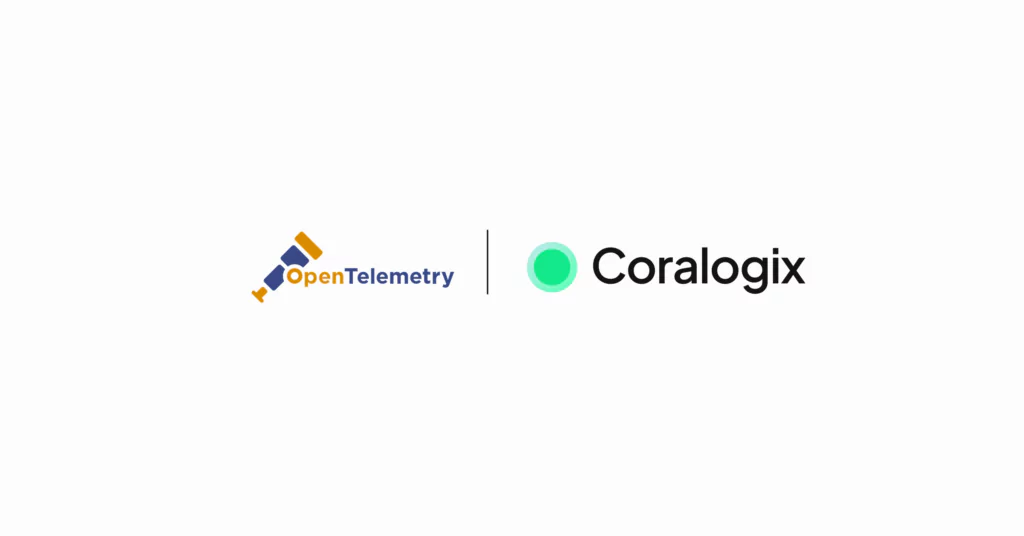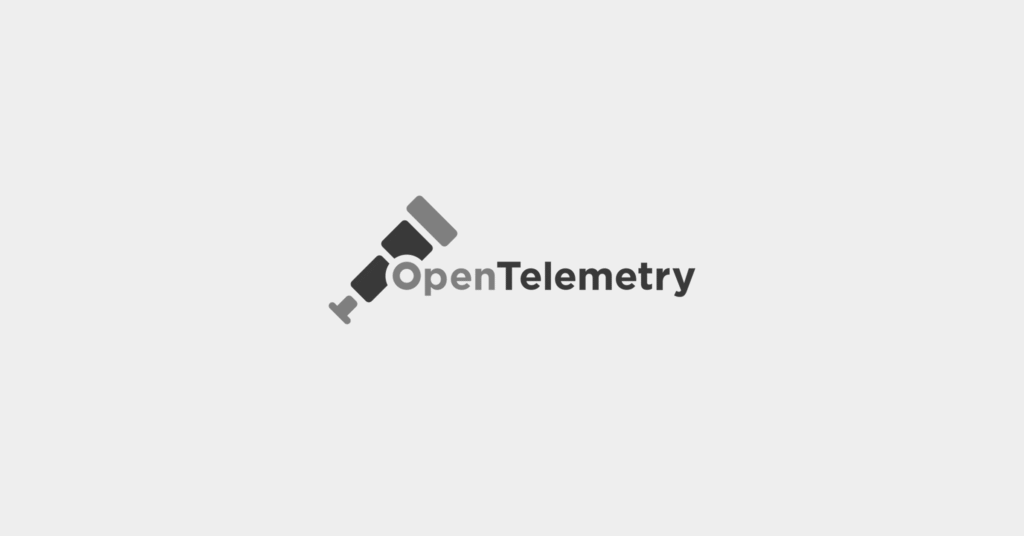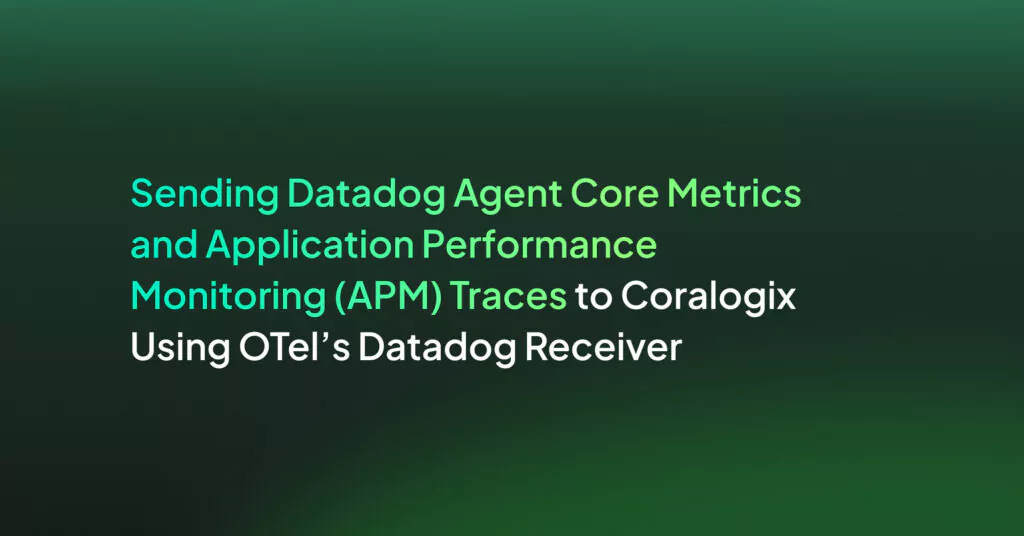OpenTelemetry vs Prometheus: 6 Key Differences and how to Choose

OpenTelemetry vs Prometheus: Key Differences
Let’s look at some of the main differences between these platforms.
1. Main Function
OpenTelemetry serves as a unified observability framework that captures telemetry data across different domains, including tracing, metrics, and logs. It aims to standardize the collection, processing, and export of telemetry data, providing a coherent approach to observability. This makes OpenTelemetry suitable for complex, distributed systems.
Prometheus is for monitoring and alerting, with an emphasis on time-series data. It focuses on gathering and storing metrics efficiently, providing querying capabilities through its query language, PromQL. Prometheus can monitor the health and performance of applications and infrastructure, making it useful for reliability engineering and operations teams.
2. Data Types Supported
OpenTelemetry supports a range of telemetry data types, including traces, metrics, and logs. Traces help in tracking the flow of requests through various services, providing insights into latency and performance bottlenecks. Metrics offer data points about system performance, such as CPU usage, memory consumption, and request rates. Logs capture discrete events and can be crucial for debugging and forensic analysis.
Prometheus specializes in metrics data, capturing time-series metrics that provide a view of how system performance evolves over time. Each metric is stored with a timestamp, allowing for tracking and analysis of performance trends. While Prometheus can integrate with external logging and tracing systems, these are not its primary focus
3. Collection Model
OpenTelemetry uses a push model for telemetry data collection, where instrumentation libraries within applications push data to configured backends for processing and storage. This provides flexibility in terms of how and where data is sent, allowing for integration with a variety of storage and analysis tools. The push model can be advantageous in environments where immediate data availability is critical, as data is sent as soon as it is collected.
Prometheus uses a pull model for metrics collection. It periodically scrapes metrics from predefined endpoints, which are typically instrumented applications or exporters. This pull model has several advantages, including reduced risk of data loss during network issues and easier management of endpoint availability. It also simplifies the configuration of monitoring, as Prometheus can dynamically discover and scrape new targets as they come online.
4. Scalability and Performance
OpenTelemetry emphasizes scalability, supporting high-volume telemetry data collection and processing. Its modular architecture allows for customization and extension to meet different needs, making it suitable for large, distributed systems. Through backends and storage solutions, OpenTelemetry can handle substantial data throughput and storage requirements.
Prometheus also offers scalability and performance, particularly for metrics data. Its time-series database is optimized for efficient storage and retrieval of metrics, enabling high-performance querying even under heavy loads. However, Prometheus’s reliance on a single-node storage model can present challenges at extreme scales. To address this, Prometheus supports federation, which allows multiple Prometheus instances to aggregate data from each other, and sharding, which distributes data across multiple instances.
5. Aggregation and Querying
OpenTelemetry does not include a built-in query language, relying instead on integration with external tools for querying and analysis. This allows users to choose from a variety of backend systems that offer different querying capabilities, providing flexibility in how data is analyzed and visualized. For example, users might integrate OpenTelemetry with Prometheus for metrics querying, Jaeger for tracing analysis, or Elasticsearch for log searching.
Prometheus features PromQL, a query language tailored specifically for time-series data. PromQL allows users to perform complex queries and aggregations, enabling analysis and visualization of metrics data. The ability to create custom queries and alerts makes Prometheus useful for real-time monitoring and troubleshooting. Users can create dashboards and visualizations using tools like Grafana.
6. Community and Adoption
Both OpenTelemetry and Prometheus benefit from community support and backing by the Cloud Native Computing Foundation (CNCF).
OpenTelemetry is experiencing rapid adoption due to its approach to observability and its endorsement by major cloud providers like Google, Microsoft, and Amazon. The project has a vibrant community of contributors who are actively developing and extending its capabilities, ensuring improvement and innovation.
Prometheus has a presence in the DevOps and Site Reliability Engineering (SRE) communities and is widely used in production environments. The Prometheus ecosystem includes multiple exporters, integrations, and extensions, allowing users to tailor the system to their needs.
Related content: Read our guide to OpenTelemetry metrics
Prometheus vs OpenTelemetry: How to Choose?
When choosing between Prometheus and OpenTelemetry, or deciding how to use them together, several key factors should be considered:
- Specific observability needs: Assess whether the primary focus is on unified observability or specialized metric monitoring. OpenTelemetry’s support for traces, metrics, and logs makes it suitable for comprehensive observability. Prometheus, however, is better suited to metric collection and alerting.
- Ease of integration: Evaluate how each tool fits into existing infrastructure. OpenTelemetry’s compatibility with various backends allows for integration into diverse environments. Prometheus, with its built-in query language and storage, is most effective in environments like Kubernetes.
- Deployment complexity: Consider the complexity of deploying and managing each tool. OpenTelemetry’s modular design offers flexibility but may require more initial setup. Prometheus, while easier to set up for metrics, can become complex to manage at scale.
- Resource management: Determine the resource implications of each tool. OpenTelemetry’s ability to integrate with various storage and analysis tools can spread resource usage across systems. Prometheus’s metric storage is beneficial but may require careful resource planning as monitoring needs grow.
- Ecosystem and community: Leverage the support and resources available. OpenTelemetry’s rapid adoption and backing by major cloud providers can be advantageous. Prometheus’s presence in the DevOps and SRE communities ensures strong support and continued innovation.
- Complexity and learning curve: Consider the complexity of setup and ongoing maintenance. OpenTelemetry can involve more components and configurations due to its flexibility, while Prometheus may require additional effort for large-scale deployment.
Managed Observability with Coralogix
Coralogix sets itself apart in observability with its open-source-friendly, modern architecture, enabling real-time insights into logs, metrics, and traces with built-in cost optimization. Coralogix’s straightforward pricing covers all its platform offerings including APM, RUM, SIEM, infrastructure monitoring and much more. With unparalleled support that features less than 1 minute response times and 1 hour resolution times, Coralogix is a leading choice for thousands of organizations across the globe.





